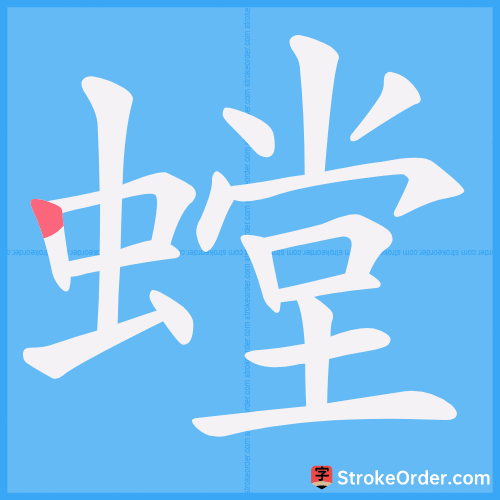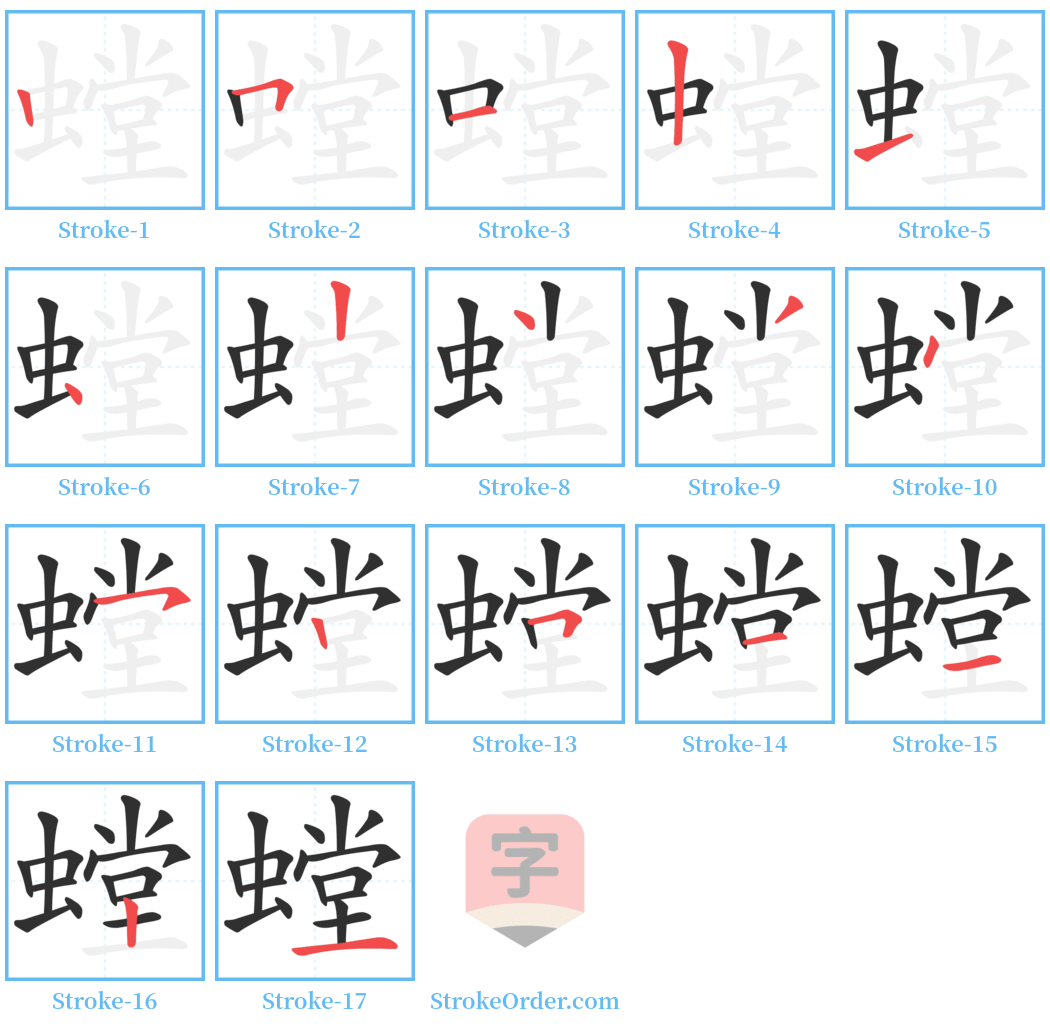螳 Stroke Order
Animated Stroke Order of 螳

Stroke Order Diagrams for 螳

Step-by-Step Handwriting Guide for 螳

Learn to Write Chinese Characters with Video Tutorials
Watch the video of writing the Chinese character "螳", learn the correct stroke order (笔顺) of the character "螳", and master the standard way of writing the character "螳".
Free Printable Handwriting Practice with Stroke Order: 螳
Printable Writing Practice Worksheet of "螳" in Portrait Orientation (Tian Zi Ge)

Printable Writing Practice Worksheet of "螳" in Landscape Orientation (Tian Zi Ge)

Information of 螳
Pinyin
táng
Radical
虫
Strokes
17 strokes
Usage
★★★★
Definition
praying mantis
螳 (táng)
1. Mantis; an insect that is entirely green or earth yellow, with a triangular head and sickle-shaped forelegs. It preys on pests and is beneficial to agriculture, as in the phrase "the mantis catches the cicada, while the oriole is behind." Commonly known as "knife mantis"; abbreviated as "螳," as in "the mantis arm trying to stop a cart" (an idiom meaning lacking self-awareness of one’s strength).
[En.] mantis
引 (influence)
1. From "Shuowen Xinjian": 螳, refers to mantis.
2. From "Yupian": 螳螂 (mantis), associated with the axe bug.
3. From "Zhuangzi · Tiandi": Just like the mantis raises its arms to block an approaching cart.
4. From "Zhuangzi · Shanmu": Sighting the cicada, it finds beautiful shade and forgets itself, while the mantis aims to catch it.
例 (examples)
- 螳斧 (the mantis's forearms; referring to its forelegs raised as if holding an axe, thus named; also a metaphor for weak military equipment).
- 螳螂之卫 (metaphor for weak military preparedness).
- 螳臂 (metaphor for lacking self-awareness; weak strength).
- 螳轮 (metaphor for those unaware of their limitations).
- 螳臂拒辙, 螳臂当辙, 螳臂扼辙 (all variations of the idiom about a mantis trying to stop a cart).
Input Method for 螳
Pinyin
tang2
Wubi
jipf
Cangjie
lifbg
Zhengma
ikjb
Four Corner
59114
Unicode
U+87b3
Same Pronunciation Characters